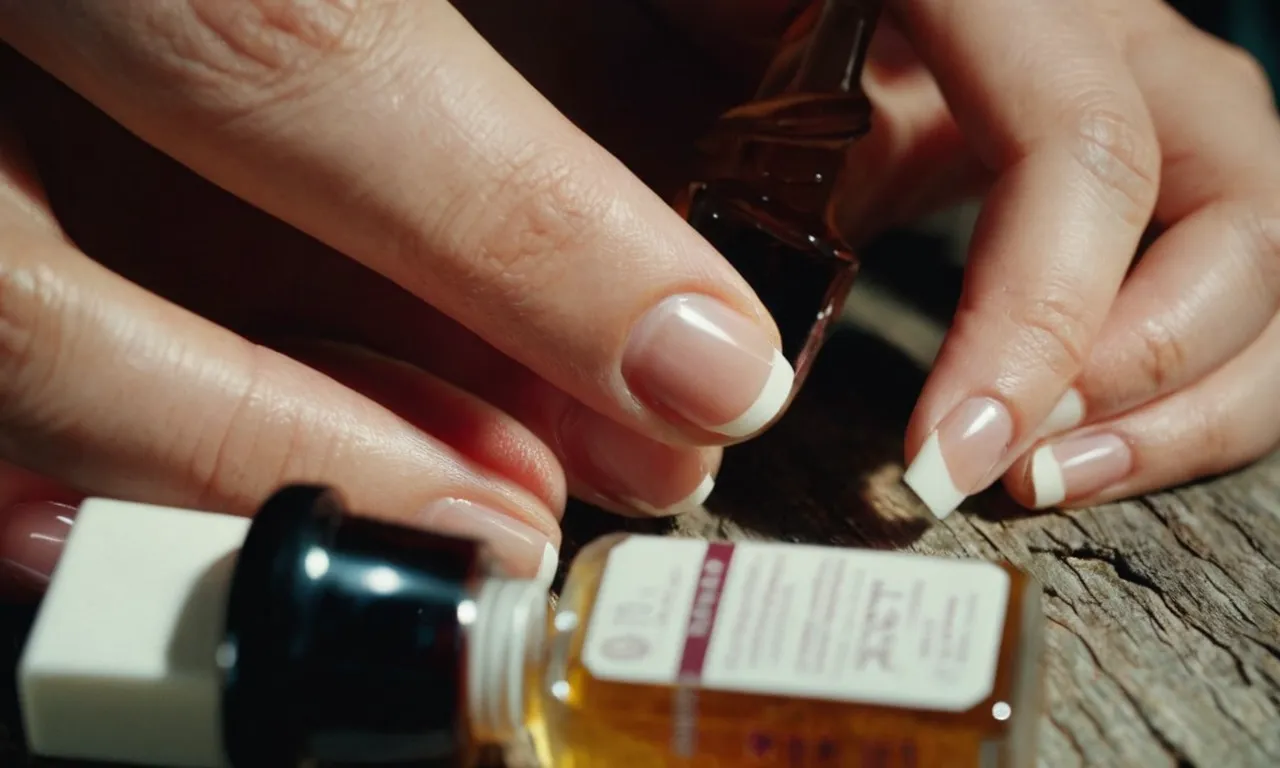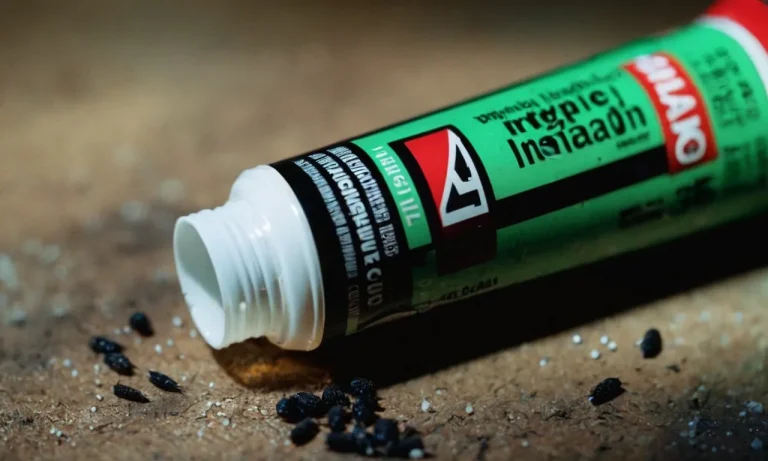How To Heal An Injured Nail Bed: A Complete Guide
If you’ve ever experienced an injury to your nail bed, you know how painful it can be. From smashed fingers to torn cuticles, nail bed injuries are surprisingly common and can take weeks or months to fully heal.
Luckily, there are things you can do at home to help treat these sensitive wounds and get your nails looking their best again.
If you’re short on time, here’s a quick answer to your question: Keep the nail and nail bed clean and moisturized. Apply antibiotic ointment and cover with a bandage. Take over-the-counter pain relievers as needed. Avoid further trauma and let the nail grow out. See a doctor for serious injuries.
Understanding Nail Bed Anatomy and How Injuries Happen
Anatomy of the nail bed
The nail bed is the skin underneath the nail plate. It contains blood vessels, nerves, and melanocytes that produce pigment that gives color to the nail plate. The nail matrix is the part of the nail bed that contains actively growing cells that produce the nail plate.
As new nail cells are made in the matrix, the older nail plate is pushed forward.
The lunula is the white crescent-shaped area at the base of the nail plate. This is where the matrix connects to the rest of the nail bed. The cuticle is also part of the nail bed. It is the thin band of tissue that seals and protects the margins of the nail plate.
Underneath the nail bed are the distal and lateral nail folds. These epidermal ridges overlap the sides and end of the nail plate to anchor it firmly to the nail bed.
The nail bed is well supplied with blood from digital arteries which run along both sides of the fingers and toes. Any injury that damages these vessels can cause heavy bleeding.
Common causes of nail bed injuries
Some common causes of nail bed injuries include:
- Closing doors – If a door slams on the fingertips, it can crush the nail bed.
- Dropping heavy objects – A falling object that lands on a digit can split or detach the nail plate from the nail bed.
- Sports injuries – Impact from a ball or other equipment can damage the nail bed in sports like baseball, football, hockey etc.
- Manicures – Overly aggressive pushing back of cuticles and improper nail trimming techniques can injure the nail bed margins.
- Pedicures – Shaving calluses with razors or aggressive filing can thin and peel back the nail plate.
Nail bed injuries are also commonly caused by accidents with tools, especially hammers and other impact devices. Working with saws, lawnmowers, hedge trimmers and other machinery can catch and rip off part of the nail plate and bed.
Fingertip injuries are particularly common for carpenters, mechanics, landscapers and construction workers.
According to a 2019 study published in the Journal of Hand Surgery, an estimated 50% of occupational fingertip injuries involve damage to the nail bed that requires surgical repair. Most cases involve young adult men who injure a thumb or index fingertip.
Without proper treatment, these complex injuries can lead to infections and deformity of the nail.
Cleaning and Protecting the Wound
Keeping it clean
Keeping the injured nail bed clean is crucial to prevent infection and allow proper healing. Here are some tips:
- Wash your hands thoroughly with soap and water before and after caring for the nail. This helps prevent bacteria from getting into the wound.
- Gently clean the nail and surrounding area with mild soap and water at least once a day. Avoid harsh soaps or scrubbing, which can further damage the nail bed.
- You can soak the nail in a bowl of warm water with a mild soap or antibacterial solution like betadine. This helps soften and loosen any blood or discharge.
- Pat dry the area gently with a clean towel after washing. Make sure the nail bed is completely dry before applying any ointment or bandage.
- Consider using a nailbrush with soft bristles to help remove debris around the edges of the nail. But brush gently to avoid pain.
Keeping the wounded nail clean will help prevent painful infection and promote healing. Be sure to wash your hands and equipment to avoid contaminating the delicate nail bed.
Using antibiotic ointment
Applying antibiotic ointment is highly recommended for nail bed injuries to prevent infection. Some tips on using antibiotic ointment:
- Choose an over-the-counter antibiotic ointment like Neosporin or Polysporin. Look for a formula containing ingredients like bacitracin, neomycin, and polymyxin B.
- Apply a thin layer of ointment over the nail bed using a cotton swab or gloved finger. Reapply the ointment 2-3 times a day after cleaning.
- Continue using the antibiotic ointment for 7-10 days while the nail bed heals. This helps prevent infection by bacteria.
- Make sure to apply ointment all the way around and under the nail. The entire injured nail bed needs protection.
- Stop using ointment if you notice increased redness, swelling, oozing, or other signs of reaction. See a doctor if infection occurs.
Using antibiotic ointment can promote healing and prevent painful complications. Be diligent about proper application and watch for any worrisome symptoms.
Covering with a bandage
Bandaging the injured nail helps keep it clean and protected while healing. Here are some bandaging tips:
- Use a sterile gauze pad or adhesive bandage designed for fingers/toes to cover the nail after applying ointment.
- Wrap the entire fingertip or toe with rolled gauze bandage to hold the pad in place and provide cushioning.
- Change the bandage once a day or whenever it gets wet or dirty. Always wash hands and reapply ointment/pad before rebandaging.
- Bandage snugly but not too tight – you don’t want to restrict blood flow. The nail should not blanch or turn pale.
- Some doctors recommend using finger/toe cots or small plastic caps over the bandage to protect further.
- Continue bandaging until the nail bed is healed, typically 7-14 days depending on severity.
Properly bandaging the nail helps shield it from bumps, dirt, and irritation, promoting faster healing. Monitor for signs of complications and rebandage properly each day.
Managing Pain and Discomfort
Taking over-the-counter medications
Taking over-the-counter (OTC) medications can help reduce pain and inflammation caused by an injured nail bed. Some common OTC options include:
- Acetaminophen (Tylenol) – Reduces mild to moderate pain.
- Nonsteroidal anti-inflammatory drugs (NSAIDs) like ibuprofen (Advil, Motrin) or naproxen (Aleve) – Relieve pain and swelling.
- Topical anesthetics like lidocaine – Numbs the area when applied directly to the nail bed.
When using OTC meds, carefully follow the dosage instructions on the label. Taking too much can lead to side effects or overdose. For severe nail bed pain, prescription medications may be necessary.
Applying cold compresses
Applying something cold to the injured nail bed can temporarily reduce pain, swelling, and inflammation. Options include:
- Ice packs or cold gel packs wrapped in a thin towel.
- Bag of frozen vegetables (like peas) or crushed ice wrapped in a towel.
- Cold water soak by submerging the finger or toe in a bowl of cold water for 15-20 minutes.
Avoid direct contact between the ice/cold water and skin, as this can damage tissue. Limit cold compresses to 20 minutes at a time and allow the skin to return to normal temperature before reapplying.
The cold helps constrict blood vessels, slowing circulation to the injury site. This reduces bleeding under the nail and swelling. It also numbs nerve endings, temporarily relieving pain. Cold therapy can be used a few times per day as needed.
Providing Optimal Healing Conditions
Avoiding further trauma
When you have an injured nail bed, it is crucial to avoid any further trauma while it heals. This means being extra careful with your nails and avoiding activities that could lead to blows or pressure on the nails.
For example, you’ll want to wear gloves while doing housework, gardening, or any tasks that involve potential nail trauma. Sports like basketball or soccer where hands can get stepped on should also be avoided.
Basically, treat your injured nail very gently, like a fresh wound, to give it the best chance of proper healing.
Keeping nails short
Along with preventing further trauma, it’s important to keep your nails trimmed short when recovering from a nail bed injury. Long nails are more prone to catching on things and getting bent back or ripped up, which can disrupt the healing process.Aim to keep nails trimmed back safely above the nail bed without cutting into the injured skin.
Having shorter nails also allows you to monitor the healing better and keep the area clean while reducing risk of infection. As the nail bed mends itself under the nail, the shorter length will reduce pressure and discomfort too. So regular gentle nail trimming is definitely recommended!
Using moisturizers
It’s easy to overlook, but keeping the nail bed area well-moisturized is vital for healing an injury. The skin around nails can dry out very quickly, especially if dressings and bandages are being regularly changed. Dryness leads to cracking and further damage.
A urea-based moisturizing cream formulated specifically for nails, cuticles, and nail folds is ideal during recovery. Apply it 2-3 times per day after washing and drying the area thoroughly. The moisturizer creates a protective barrier, allowing healthy new skin and nails to regenerate underneath while preventing infection.
Studies show that consistent moisturizer use shortens healing time by a couple of weeks! So this simple step makes a big difference.(1)
Knowing When to See a Doctor
Signs of infection
Injuries to the nail bed, especially those that break the skin, carry a risk of developing an infection. Signs of an infected nail bed include:
- Increasing pain, swelling, warmth, and redness around the nail
- Pus or cloudy discharge from the nail
- Foul smell around the nail
- Red streaks spreading from the nail up the finger or toe
- Fever or chills
These symptoms suggest the infection is spreading into the finger or toe and requires prompt medical attention. Left untreated, the infection can spread into the hand, foot and even the bloodstream. See a doctor right away if you notice any signs of a worsening skin or nail infection.
Serious injuries requiring medical care
Some nail bed injuries are too serious to manage at home and require professional medical treatment. Seek emergency care if the nail bed injury involves:
- Complete separation or avulsion of the nail
- Very deep cuts into the nail bed
- Crush injuries damaging the nail bed
- Part of the nail completely torn off
- Exposed bone or tendon
- Uncontrolled bleeding
For serious nail bed lacerations, the doctor may need to stitch the wound closed or even remove remnants of the damaged nail. Prompt medical care can help prevent permanent nail deformity or loss.
It’s also best to see a doctor for nail bed injuries if:
- The wound is too large or deep to thoroughly clean at home
- You have diabetes, peripheral vascular disease or other condition that impairs wound healing
- The injury causes significant, persistent pain or loss of function
These high-risk individuals are more prone to complications like infections and poor healing. Getting the right medical treatment can help avoid future nail problems.
Conclusion
Damage to the nail bed can be extremely troublesome, but fortunately these sensitive tissues can heal remarkably well. By keeping your nail clean, protected, and moisturized, managing discomfort, and avoiding further trauma, most nail bed injuries will recover within several months.
Pay attention for any signs of infection and don’t hesitate to seek medical care for serious trauma to ensure proper healing. With some basic at-home care, your nail should make a full recovery.







